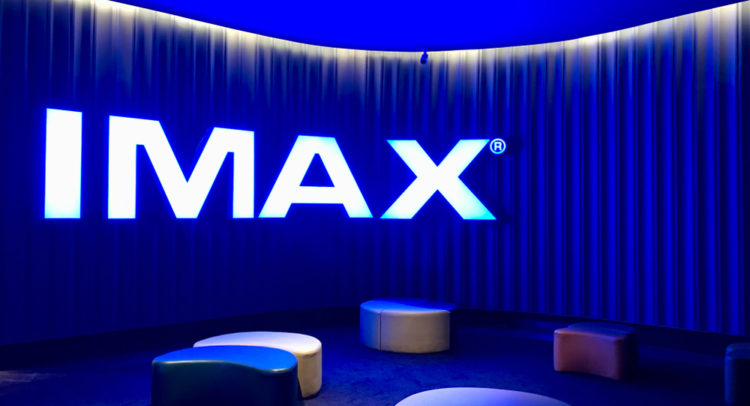IMAX Corp. (IMAX) recently came out with better-than-expected Q2 numbers. IMAX is an entertainment technology company, specializing in motion-picture technologies and large-format motion-picture presentations.
Let’s take a look at the financial performance of the company and what has changed in its key risk factors that investors should know.
Driven by the return of Hollywood blockbuster releases and a rebound in the domestic box office, IMAX’s Q2 revenue increased 475% year-over-year to $51 million, beating the Street’s estimate of $40.6 million.
Net loss per share at $0.12 was narrower than the consensus estimates by $0.18. The company notes that its global network is now 90% open and limitations on capacity continue to ease in its key markets globally. Significantly, this was the third consecutive quarter of positive EBITDA for IMAX and it expects to benefit from a robust Hollywood movie pipeline with major releases expected every two weeks, starting early September. (See IMAX stock chart on TipRanks)
The CEO of IMAX, Richard L. Gelfond, said, “IMAX delivered continued progress in operating results, demonstrating growing momentum for the company. Thanks to our asset-lite model, we capitalized on strong year-over-year growth in revenue and global box office to achieve another quarter of improved profitability.”
Last week, J.P. Morgan analyst Alexia Quadrani reiterated a Hold rating on the stock but decreased the price target to $20 from $24.
Based on 4 Buys, 1 Hold, and 1 Sell, consensus on the Street is a Moderate Buy. The average IMAX price target of $22.60 implies 40% upside potential. Shares are up 42.4% over the past year.

Now, let’s look at what has changed in the company’s key risk factors.
According to the new Tipranks’ Risk Factors tool, IMAX’s main risk category is Finance & Corporate, which accounts for 48% of the total 29 risks identified. Since June, the company has added three key risk factors.
Under the Finance & Corporate category, the company highlights that certain provisions in its convertible notes and related indenture could make it difficult or expensive for a third party to acquire IMAX. If a takeover constitutes a fundamental change then holders of its convertible notes will have the right to require IMAX to repurchase their notes for cash. If a takeover constitutes a make-whole fundamental change then noteholders can require the company to temporarily increase the conversion rate of the notes.
Associated with these convertible notes, IMAX entered into privately negotiated capped call transactions to reduce the potential dilution and to offset any potential cash payments it may be required to make. These measures may not work out as planned.
Another key risk is that IMAX’s debt level and liabilities could limit the cash flow available for its operations. At the end of June, the company had about $347.8 million in consolidated debt and may also incur additional debt in the future. This could have adverse consequences for its investors and business as higher leverage makes the company more vulnerable to adverse economic and industry conditions.
The Finance & Corporate risk factor’s sector average is at 45%, compared to IMAX’s 48%.

Related News:
STMicroelectronics Reports Blowout Quarter, Updates Guidance
Intercontinental Exchange’s Q2 Results Miss Analysts’ Expectations
Axcella Health Reports Smaller-Than-Feared Quarterly Loss









